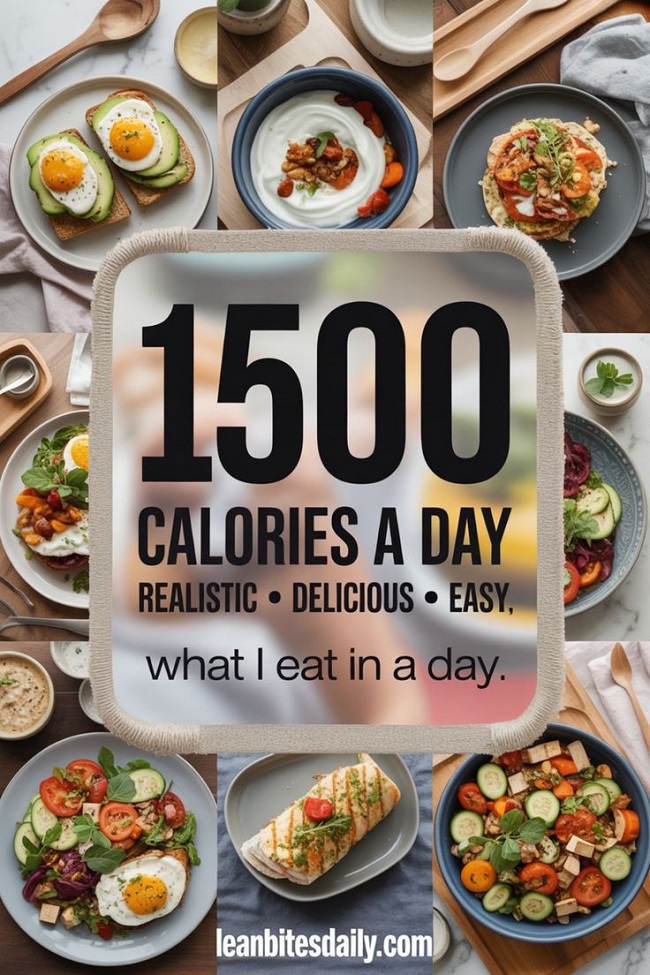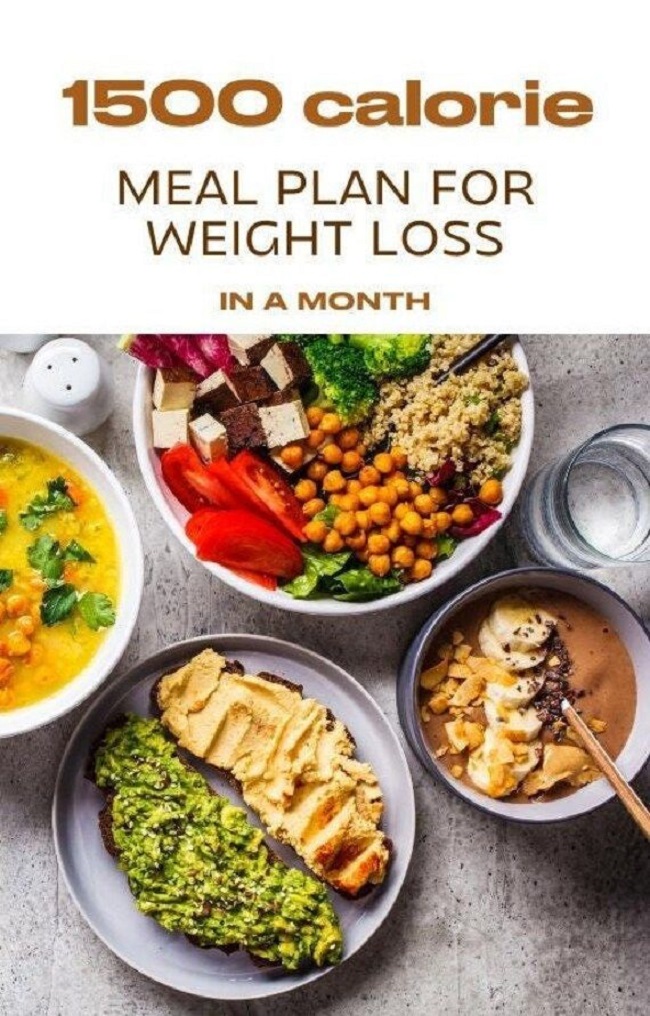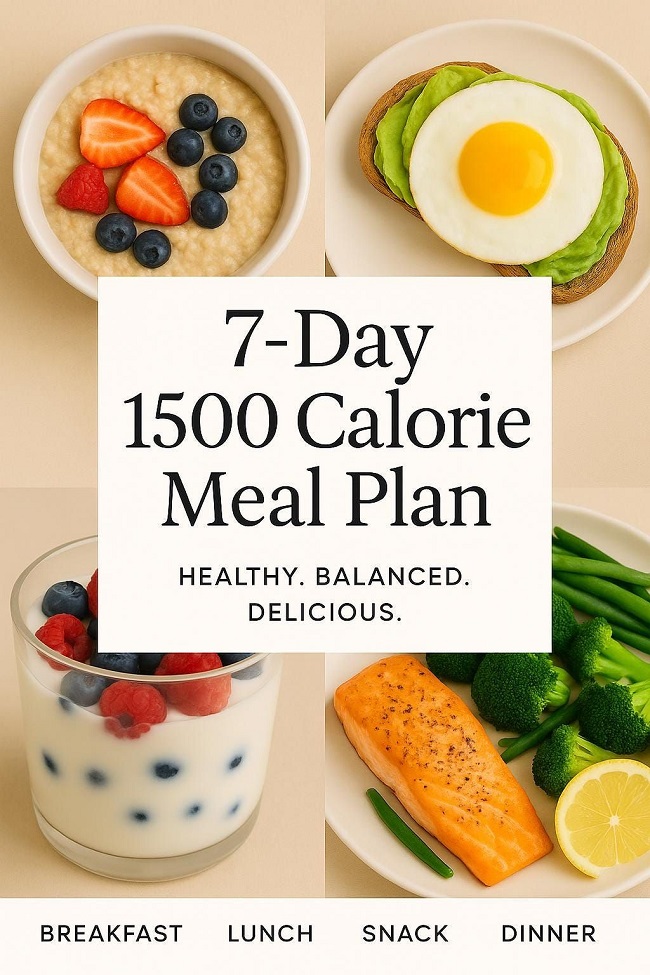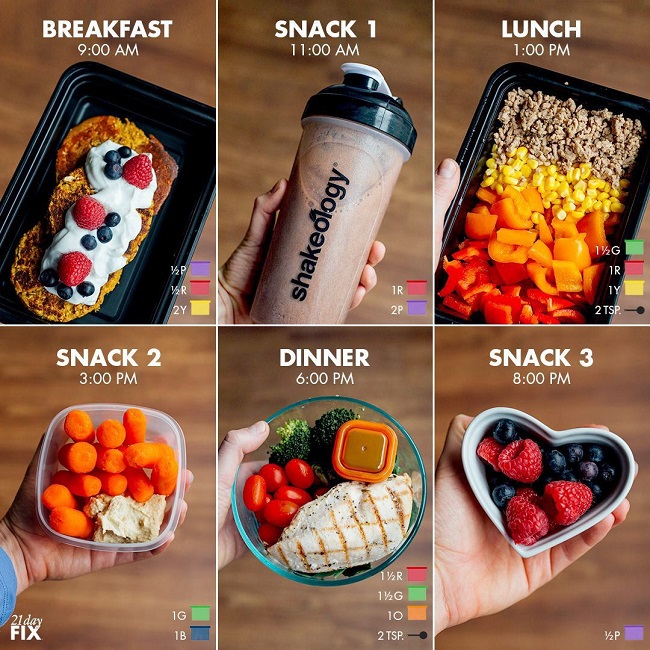Introduction
A 1500 calorie meal plan is a popular choice for individuals looking to manage their weight while enjoying balanced meals. This plan provides the right amount of nutrients for a healthy lifestyle without feeling deprived. Many people in the USA turn to this type of meal plan for weight loss, energy, and overall wellness.
When following a 1500 calorie meal plan, it’s important to focus on nutrient-dense foods. Lean meats, good fats, and an abundance of fruits and vegetables are all part of this. By doing so, you ensure that you stay full and satisfied while maintaining your daily caloric goals.
What is a 1500 Calorie Meal Plan?
A 1500 calorie meal plan is a structured eating plan designed to provide individuals with a total intake of 1500 calories per day. This caloric amount is often recommended for weight loss, maintenance, or healthy eating for individuals looking to manage their body weight while still enjoying satisfying meals. By balancing macronutrients like carbohydrates, proteins, and fats, a 1500 calorie meal plan ensures that your body receives essential nutrients without exceeding your daily calorie target.
A typical 1500 calorie meal plan consists of three main meals (breakfast, lunch, and dinner) along with snacks to keep hunger at bay throughout the day. The focus is on nutrient-dense foods such as lean proteins, whole grains, fruits, vegetables, and healthy fats. This approach helps ensure that while reducing calorie intake, the body still gets the necessary vitamins and minerals to function properly.
For example, a day on a 1500 calorie meal plan might include a balanced breakfast of oatmeal with berries and a boiled egg, a light lunch of a grilled chicken salad with olive oil dressing, and a healthy dinner of baked salmon, quinoa, and steamed broccoli. Snacks might include a small portion of almonds or a piece of fruit. These meals are designed to keep you feeling full and satisfied while promoting weight loss or healthy weight maintenance.
The 1500 calorie meal plan is not one-size-fits-all and may need adjustments depending on factors like age, gender, activity level, and specific health goals. It’s always best to consult a healthcare provider or dietitian before starting any calorie-restricted meal plan to ensure it aligns with your personal health needs and lifestyle.
Why Choose a 1500 Calorie Meal Plan?

Choosing a 1500 calorie meal plan has several benefits, especially for those looking to lose weight.Your body experiences a calorie deficit, which results in weight reduction, when you take in less calories than you expend. However, this doesn’t mean you have to eat bland or restrictive meals. A 1500 calorie meal plan allows for delicious, satisfying meals that keep you full and energized throughout the day.
Some benefits of following a 1500 calorie meal plan include:
1. Sustainable Weight Loss at a Moderate Pace
One of the primary benefits of a 1500 calorie meal plan is that it supports weight loss at a moderate and sustainable pace. By creating a calorie deficit—consuming fewer calories than the body burns—this approach helps the body gradually burn fat while preserving lean muscle mass. Rapid weight loss, often seen in crash diets, can lead to muscle loss and other health issues. A 1500 calorie meal plan, however, promotes steady progress and allows the body time to adjust, ensuring healthier, more sustainable results. This moderate pace also reduces the chances of regaining weight, as the body adapts to healthier habits over time.
2. Encourages Healthy Eating Habits
A 1500 calorie meal plan encourages mindful eating and healthy food choices. By focusing on balanced meals that include lean proteins, whole grains, vegetables, and healthy fats, individuals learn to prioritize nutrient-dense foods over processed, high-calorie options. This approach reduces the temptation to indulge in empty-calorie foods, fostering healthier habits. Over time, individuals develop a more intuitive understanding of portion sizes and calorie intake, which is crucial for maintaining long-term weight management. The structure of the plan encourages people to choose whole foods, which helps improve overall health.
3. Helps Regulate Blood Sugar Levels
Another significant benefit of a 1500 calorie meal plan is its ability to help regulate blood sugar levels. By including a balanced mix of complex carbohydrates, fiber, and lean proteins, the plan stabilizes blood sugar spikes and dips throughout the day. This is especially beneficial for individuals with insulin resistance or those at risk of developing type 2 diabetes. A steady blood sugar level helps reduce cravings and energy crashes, contributing to more consistent energy levels and improved overall mood. Additionally, maintaining balanced blood sugar is key to reducing the risk of chronic conditions associated with poor blood sugar control.
4. Improves Overall Health and Fitness
Incorporating a 1500 calorie meal plan into a lifestyle promotes overall health and fitness. With its emphasis on nutrient-dense foods and balanced macronutrient intake, the plan ensures that individuals receive the necessary vitamins, minerals, and antioxidants to support bodily functions. A nutritious diet strengthens the immune system, facilitates better digestion, promotes healthy skin, and increases vitality. Additionally, with a focus on protein intake, a 1500 calorie meal plan can help improve muscle mass and recovery, supporting those who engage in regular physical activity. Combined with exercise, this plan supports both weight loss and physical fitness.
5. Provides Balanced Nutrition
A 1500 calorie meal plan provides a balanced distribution of essential macronutrients—proteins, fats, and carbohydrates. Protein is crucial for building and repairing muscle tissue, while healthy fats support brain function and hormone production. Carbohydrates, especially complex ones like whole grains, provide steady energy throughout the day. By balancing these macronutrients, the plan ensures that the body gets all the nutrients it needs to function optimally. This balanced nutrition prevents nutrient deficiencies, supports metabolism, and helps maintain energy levels, making it easier to stay active and healthy.
In conclusion, a 1500 calorie meal plan is a comprehensive approach to achieving sustainable weight loss while promoting healthy eating habits, regulating blood sugar levels, improving overall health and fitness, and providing balanced nutrition. By focusing on moderate changes, this plan offers long-term benefits that go beyond just weight management.
How to Build a Balanced 1500 Calorie Meal Plan
Building a balanced 1500 calorie meal plan involves carefully selecting foods that provide essential nutrients while staying within your calorie target. The key is to focus on nutrient-dense, whole foods that support overall health and energy levels. Here’s how to build a balanced plan:
1. Focus on Macronutrient Balance
A balanced 1500 calorie meal plan should include an appropriate distribution of macronutrients: proteins, fats, and carbohydrates. A typical breakdown could be:
- Lean protein foods, such as chicken, turkey, fish, tofu, or lentils, should account for 20–30% of total calories. Protein helps with muscle maintenance, satiety, and metabolic function.
- Fats (25-35% of total calories): Incorporate healthy fats from sources like avocados, olive oil, nuts, and seeds. Healthy fats support brain function, hormone balance, and heart health.
- Carbohydrates (40-50% of total calories): Opt for complex carbs like whole grains, fruits, and vegetables. These are high in fiber, which facilitates digestion, and offer long-lasting energy.
2. Include Nutrient-Dense Foods
Focus on foods that provide maximum nutrients for the least calories. This includes vegetables, fruits, whole grains, and lean proteins. These foods promote your general health since they are high in vitamins, minerals, and antioxidants.
- Vegetables: Aim to fill half of your plate with non-starchy vegetables like leafy greens, broccoli, peppers, and zucchini.
- Fruits: Incorporate a variety of fruits like berries, apples, and oranges, which provide essential vitamins and fiber.
- Whole Grains: Include whole grains like quinoa, brown rice, and oats, which are rich in fiber and promote fullness.
3. Plan for Snacks
Incorporate snacks to keep hunger in check between meals. Choose low-calorie options that provide protein or fiber, such as a handful of almonds, Greek yogurt, or raw veggies with hummus.
4. Portion Control
To stay inside the 1500 calorie target, precise portion sizes are essential. Using a food scale or measuring cups can help ensure you’re eating the right amounts.
Sample 1500 Calorie Meal Plan
This is an example 1500-calorie meal plan that consists of two snacks throughout the day and three well-balanced meals. This plan provides a variety of nutrient-dense foods, including lean proteins, healthy fats, complex carbohydrates, and plenty of fruits and vegetables to ensure you stay full and energized.
Breakfast (350 Calories)
- Oatmeal with Berries and Almond Butter
- 1/2 cup rolled oats (150 calories)
- 1/2 cup mixed berries (35 calories)
- 1 tablespoon almond butter (90 calories)
- 1/2 teaspoon honey (15 calories)
- 1 cup unsweetened almond milk (60 calories)
This breakfast provides a good balance of complex carbohydrates, healthy fats, and fiber to start your day. The oats offer slow-releasing energy, while the almond butter adds a dose of healthy fat to keep you full.
Morning Snack (150 Calories)
- Apple with Greek Yogurt
- 1 medium apple (95 calories)
- 1/2 cup plain Greek yogurt (55 calories)
This snack combines a satisfying serving of fruit with a protein-rich yogurt, helping curb hunger and providing important nutrients like fiber and protein. Greek yogurt also helps maintain gut health and promotes muscle repair.
Lunch (400 Calories)
- Grilled Chicken Salad
- 3 oz grilled chicken breast (140 calories)
- 2 cups mixed greens (20 calories)
- 1/2 cup cherry tomatoes (15 calories)
- 1/4 avocado (60 calories)
- One tablespoon of vinegar dressing and olive oil (120 calories)
- 1/2 cup quinoa (90 calories)
This lunch is rich in lean protein, healthy fats, and fiber. The grilled chicken offers a protein boost while the avocado and olive oil provide healthy fats. The quinoa is a great source of whole grains and fiber, keeping you full and satisfied.
Afternoon Snack (150 Calories)
- Carrot Sticks with Hummus
- 1 medium carrot, cut into sticks (25 calories)
- 3 tablespoons hummus (125 calories)
This snack provides a satisfying crunch with the carrots and a dose of healthy fats and protein from the hummus. It’s also an excellent source of fiber and healthy fats to keep you energized through the afternoon.
Dinner (450 Calories)
- Baked Salmon with Steamed Broccoli and Sweet Potato
- 4 oz baked salmon (230 calories)
- 1/2 cup steamed broccoli (25 calories)
- 1 medium sweet potato (100 calories)
- 1 teaspoon olive oil (45 calories)
- 1 tablespoon lemon juice (5 calories)
The salmon in this meal is a great source of omega-3 fatty acids, which lower inflammation and support heart health. The sweet potato provides complex carbohydrates for sustained energy, while the broccoli offers essential vitamins and fiber.

7-Day 1500 Calorie Meal Plan (Sample)
A 1500 calorie meal plan works best when followed with consistency, which is why a weekly structure can help. Below is a sample 7-day 1500 calorie meal plan:

- Day 1: Oatmeal + chicken salad + grilled salmon dinner
- Day 2: Smoothie bowl + turkey sandwich + lentil curry dinner
- Day 3: Scrambled eggs + quinoa bowl + baked cod dinner
- Day 4: Yogurt parfait + veggie wrap + chicken stir-fry
- Day 5: Chia pudding + soup & salad + shrimp stir-fry
- Day 6: Protein shake + chicken burrito bowl + tofu stir-fry
- Day 7: Avocado toast + tuna wrap + roasted veggie dinner
Portion Control Tips for a 1500 Calorie Meal Plan

Portion control is essential when following a 1500 calorie meal plan to ensure you stay within your daily calorie target while still getting the necessary nutrients. Here are some effective portion control tips:
- Use Smaller Plates:
Smaller plates can help trick your brain into thinking you’re eating more than you actually are. This can help reduce portion sizes without feeling deprived. - Measure Food:
To measure your meals precisely, use portion control containers, a food scale, or measuring cups. This ensures you are consuming the correct serving sizes and avoids overeating. - Pre-portion Snacks:
Prepare snacks in advance and separate them into tiny containers rather than consuming them straight from the packet. This can prevent you from mindlessly eating extra calories. - Fill Half Your Plate with Vegetables:
Vegetables are rich in nutrients and low in calories. Filling half your plate with veggies allows you to eat a larger volume of food while keeping calories low. - Avoid Eating from the Package:
It is simple to lose track of calories when consuming items like chips or almonds. Portion them into a bowl or snack container first. - Eat Mindfully:
Slow down and savor each bite. Eating slowly helps you recognize when you’re full, preventing overeating. - Stick to Protein, Carbs, and Fats in Balance:
Ensure each meal includes lean protein, healthy fats, and complex carbs to help with satiety and nutrient balance.
How to Customize Your 1500 Calorie Meal Plan

While a basic 1500 calorie meal plan provides a solid foundation, you can customize it to fit your specific preferences, dietary restrictions, and goals. The plan can be changed in the following ways:
- Vegetarian or Vegan Options:
Replace animal proteins with plant-based alternatives such as tofu, tempeh, or legumes. These options provide essential protein while being lower in fat and cholesterol. - Low-Carb Variations:
If you’re following a low-carb diet, reduce the number of grains and focus on high-protein, low-carb foods like lean meats, eggs, and leafy vegetables. Replace starchy carbs with non-starchy vegetables. - Gluten-Free:
Swap regular grains for gluten-free options like quinoa, rice, or gluten-free oats. These alternatives still provide fiber and essential nutrients without gluten, making them suitable for those with sensitivities. - Incorporating Intermittent Fasting:
If you practice intermittent fasting, adjust the meal timing to fit your fasting window while maintaining the 1500-calorie limit. You could eat your meals within a shorter window (e.g., 8 hours) and fast for the remaining hours, helping with digestion and weight management.
Items to Add to Your 1500-Calorie Diet
When creating a 1500 calorie meal plan, it’s important to choose nutrient-dense foods that provide a balance of essential macronutrients (proteins, fats, and carbohydrates) and micronutrients (vitamins and minerals). Here are some foods to include in your 1500 calorie meal plan:
- Lean Proteins:
- Chicken breast
- Turkey
- Fish (salmon, tuna, mackerel)
- Eggs and egg whites
- Tofu, tempeh, and legumes (beans, lentils, chickpeas)
- Greek yogurt (preferably non-fat or low-fat)
- Healthy Fats:
- Avocados
- Olive oil or avocado oil
- Nuts (almonds, walnuts)
- Seeds (chia, flax, sunflower)
- Nut butters (peanut butter, almond butter)
- Whole Grains:
- Brown rice
- Quinoa
- Oats
- Whole wheat bread or pasta
- Barley
- Fruits and Vegetables:
- Leafy greens (spinach, kale, arugula)
- Cruciferous vegetables (broccoli, cauliflower)
- Berries (strawberries, blueberries, raspberries)
- Apples, oranges, and pears
- Carrots, cucumbers, bell peppers
- Tomatoes and avocados
- Dairy or Dairy Alternatives:
- Low-fat or non-fat milk
- Cheese (in moderation)
- Plant-based milk (almond milk, soy milk, oat milk)
Common Mistakes with a 1500 Calorie Meal Plan
Many people struggle with the 1500 calorie meal plan because of common mistakes. One mistake with the 1500 calorie meal plan is relying too much on processed or packaged low-calorie foods that lack nutrients. Another issue is skipping meals, which can cause cravings and overeating later, derailing the 1500 calorie meal plan. Some also fail to include enough protein, making the 1500 calorie meal plan less filling. Avoiding these mistakes ensures that your 1500 calorie meal plan remains sustainable and effective.
How to Stay Consistent with Your 1500 Calorie Meal Plan
Staying consistent with a 1500 calorie meal plan can be challenging, especially when life gets busy or cravings hit. The following advice will help you keep on course:
| Tip | Description |
|---|---|
| Plan Ahead | To avoid temptations at the last minute, prepare meals in advance. |
| Track Your Calories | To monitor your consumption and maintain your goal, use an app. |
| Meal Prep Weekly | To maintain portion control and save time, cook in bulk. |
| Stay Hydrated | Drink plenty of water to curb hunger and stay energized. |
| Incorporate Variety | Rotate different proteins, veggies, and fruits to avoid monotony. |
| Portion Control | Use measuring tools to avoid overeating and stay within your calorie limit. |
| Allow Flexibility | Occasionally indulge within your calorie limit to avoid feeling deprived. |
| Find Support | Join a community or find a partner for motivation and accountability. |
| Focus on Whole Foods | Prioritize nutrient-dense foods that keep you full longer. |
| Be Patient | Consistency is key—give yourself time to see results. |
Conclusion
A 1500 calorie meal plan is a practical and effective way to manage your calorie intake and reach your weight loss or health goals. By focusing on balanced, nutrient-dense meals, you can enjoy delicious food while still staying within your calorie target. Remember, consistency is key, and with the right planning and adjustments, this meal plan can fit into any lifestyle.
Whether you’re new to meal planning or a seasoned pro, this 1500 calorie meal plan offers an accessible and sustainable way to manage your nutrition. With mindful portion control, customization options, and healthy food choices, you’ll be on your way to a healthier, more balanced lifestyle in no time.
FAQs,
Is the 1500 calorie meal plan safe for everyone?
The 1500 calorie meal plan is generally safe but may not be suitable for athletes, pregnant women, or those with specific medical needs.
How much weight can I lose on a 1500 calorie meal plan?
Most people following the 1500 calorie meal plan can lose 1-2 pounds per week depending on activity level and metabolism.
Can men follow a 1500 calorie meal plan?
Yes, men can follow the 1500 calorie meal plan, but some may need more calories based on muscle mass and activity level.
Can I exercise on a 1500 calorie meal plan?
Yes, exercising while on the 1500 calorie meal plan is recommended, but you may need to adjust calories based on workout intensity.
What foods should I avoid on a 1500 calorie meal plan?
The 1500 calorie meal plan works best when avoiding processed foods, fried foods, sugary snacks, and soda.
Can vegetarians follow a 1500 calorie meal plan?
Yes, the 1500 calorie meal plan can be easily adapted for vegetarians using beans, lentils, tofu, and other plant-based proteins.
Is the 1500 calorie meal plan good for long-term use?
The 1500 calorie meal plan can be followed long-term if it feels sustainable, but it’s best to adjust as your health goals evolve.
How can I avoid hunger on a 1500 calorie meal plan?
Incorporate protein and healthy fats into each meal to help curb hunger. Drinking plenty of water throughout the day also helps.
Can I follow the 1500 calorie meal plan if I am diabetic?
Yes, the 1500 calorie meal plan can work for diabetics, but meals should focus on low-glycemic foods like whole grains, lean protein, and vegetables. Always consult your doctor before starting the 1500 calorie meal plan if you have medical conditions.